Reggio Emilia and Montessori are two of the most influential philosophies in early childhood education. Both approaches are highly respected and have developed large followings worldwide, but they differ in their methods, principles, and educational outcomes.
This comprehensive exploration of the Reggio Emilia vs. Montessori philosophy will help parents, educators, and caregivers understand the core of each approach and make informed decisions about the best educational path for their children.
In this post:
- Origins and Philosophical Foundations
- Key Principles and Curriculum
- Educational Environment and Teacher Role
- Classroom Materials
- Ages Served By Reggio Emilia and Montessori Schools
- Comparison of Outcomes
- Which approach is best? Reggio Emilia vs. Montessori
Origins and Philosophical Foundations
Montessori Education
Developed by Dr. Maria Montessori in the early 1900s in Italy, Montessori education is centered around the idea of allowing children to develop naturally and independently.
Dr. Montessori believed that education should be an aid to life and that children learn best in environments that support their natural development. This philosophy emphasizes individual activity and allows children to choose from a range of tasks that can be completed with minimal adult assistance.
The Montessori philosophy is now often incorporated at home with things like Montessori shelves and weaning tables.
Reggio Emilia Approach
Originating in the post-World War II era in the small Italian town of Reggio Emilia, this approach was developed by Loris Malaguzzi and the local parents.
It focuses on preschool and primary education, advocating a learning environment that uses a child’s natural curiosity and interests as a base for exploration and discovery.
Unlike Montessori, Reggio Emilia emphasizes collaborative social learning, where each child is a protagonist in their learning journey.
Key Principles and Curriculum
Montessori Principles:
- Prepared Environment: Classrooms are carefully organized to offer a range of activities that cater to the child’s natural learning stages. The environment is scaled to the child’s size and is designed to be accessible and inviting.
- Auto education: Children are seen as naturally eager for knowledge and capable of initiating learning in a supportive, well-prepared learning environment.
- Sensory Education: Montessori stresses the importance of developing the senses and offers many materials for this purpose.
- Respect for the Child: The child’s choice is central, and they are treated as capable individuals who are active in their own education.
Reggio Emilia Principles:
- Emergent Curriculum: Curriculum topics are derived from the children’s interests, and projects can emerge from any part of the learning experience.
- Project Work: Learning occurs through projects, which are in-depth studies of concepts, ideas, and interests as they appear during the year.
- Representation: Children use multiple forms of communication (drawing, sculpture, dramatic play) to convey their understanding or questions about a topic.
- Documentation: Teachers document children’s thoughts and progression of thinking, which is an essential tool in the learning process.
Examples of documentation in Reggio Emilia:
Educational Environment and Teacher Role
Montessori Environment
The classroom environment plays a critical role in the Montessori method. It is designed to maximize independent learning and exploration.
Teachers in a Montessori classroom are viewed as guides or facilitators. They provide the framework and the materials for learning and then step back to let students learn by doing.
This promotes autonomy and a sense of accomplishment as children master various tasks.
- Incorporate Montessori ideas into your home with a Montessori floor bed, Montessori mirror, and Montessori books!
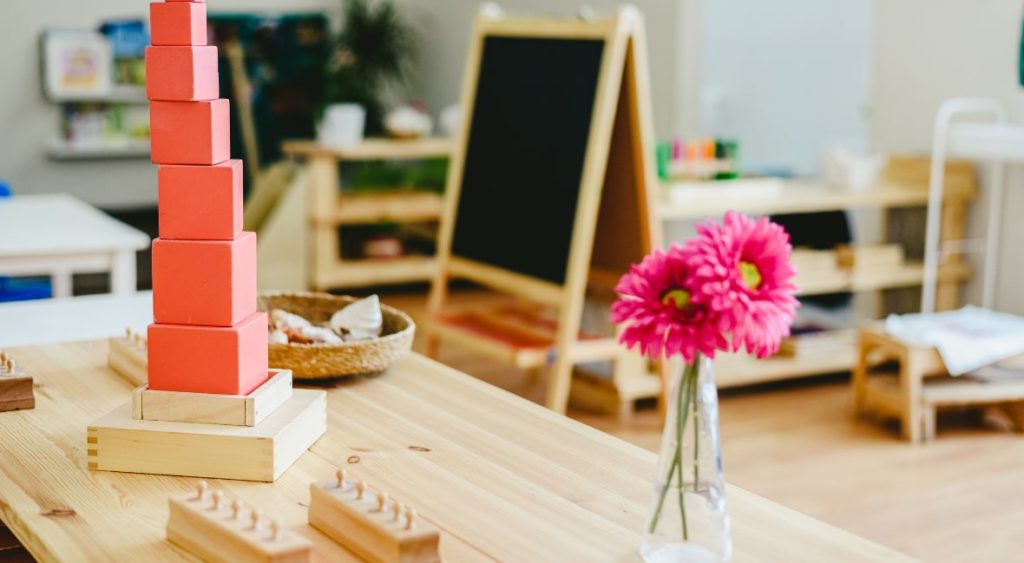
Reggio Emilia Environment
Reggio Emilia classrooms are also carefully designed but place a greater emphasis on aesthetics, often described as the third teacher. The environment is rich in materials that provoke curiosity and discovery.
The role of the teacher is more collaborative than in Montessori. Teachers are considered co-learners and collaborators with the child and not just instructors. They are involved in the learning process, engaging with children and facilitating their exploration.
Classroom Materials
The materials found in Montessori and Reggio Emilia classrooms reflect the distinct educational philosophies of each approach. Both environments are carefully designed to facilitate learning but prioritize different types of engagement and skill development.
Montessori Classroom Materials
In Montessori classrooms, materials are specifically designed to support independent learning and sensory-motor activities that are crucial to intellectual development. These materials are:
- Self-Correcting: Many Montessori materials are designed so that the child can independently assess accuracy. For example, puzzles that only fit together in the correct way enable children to work independently and learn from their mistakes without direct adult intervention.
- Sequential: Materials are often arranged in a sequence from the simplest to the most complex, encouraging children to progress at their own pace.
- Reality-Based: Objects and tools are realistic and functional, scaled to child size but designed to mimic the adult world. This includes items like small brooms, dressing frames, and kitchen tools.
- Didactic: Each piece of Montessori equipment is designed to teach a specific concept, such as the bead frames for counting or the sandpaper letters for phonetics.
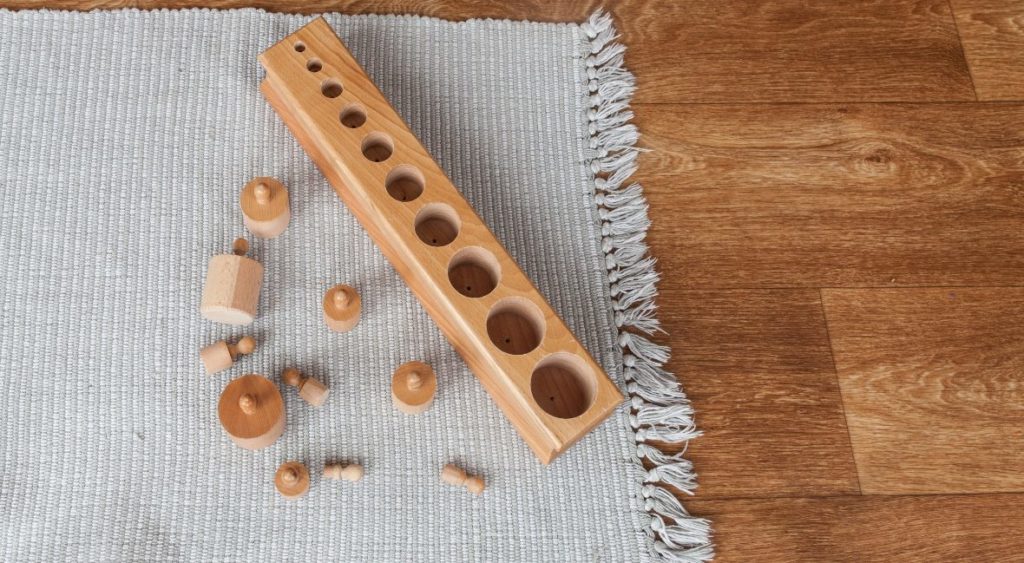
Examples include:
- Sensorial Materials: Color tablets, geometric solids, and sound boxes.
- Mathematics Materials: Bead chains, golden beads, and spindle boxes.
- Language Materials: Movable alphabet, language cards.
- Practical Life Materials: Pouring and spooning activities, polishing tools, and threading frames.
Reggio Emilia Classroom Materials
Reggio Emilia classrooms, on the other hand, are often characterized by their use of open-ended materials that encourage exploration and expression.
These materials are not standardized but are selected based on their potential to provoke questions and lead to discovery.
- Natural and Recycled Materials: These classrooms often use items like stones, leaves, twigs, fabrics, and recycled objects. These materials are chosen for their aesthetic qualities and ability to be used in multiple ways.
- Art Supplies: A wide variety of art materials are always available, including paint, clay, wire, beads, and more, to allow children to express themselves and explore different media through process art projects.
- Real Tools: Children are given real, adult-sized tools adjusted for safety, like hammers, saws, and other crafting tools.
- Documentation Tools: Cameras, tape recorders, and notepads might be available for children to document their own learning and reflect on their experiences.
Examples include:
- Loose Parts: Small items that can be arranged, stacked, assembled, and tinkered with in multiple ways.
- Light and Shadow: Light tables, overhead projectors, and materials for creating shadows and exploring light.
- Dramatic Play: Items children can use to create and act out stories, such as costumes, puppets, and props.
Examples of loose parts play in the Reggio Emilia approach:
The choice of materials in each setting aligns with their educational goals—Montessori materials are carefully crafted to teach specific skills and concepts through individual exploration. In contrast, Reggio Emilia materials are chosen to inspire collaborative and creative thinking.
Ages Served By Reggio Emilia and Montessori Schools
Both the Reggio Emilia and Montessori approaches originated with a focus on early childhood education. Still, they cater to different age ranges and can be adapted to various stages of a child’s development.
Montessori Approach
The Montessori method serves a wide range of ages, from infancy through adolescence. It is typically structured into several multi-age groupings:
- Infant/Toddler programs (ages 0-3 years) focus on motor development and language acquisition.
- Primary programs (ages 3-6 years): These classrooms encourage sensory-motor activities and practical life skills by introducing academic materials.
- Elementary programs (ages 6-12 years): At this stage, the curriculum expands to include a broader range of subjects, including geography, history, science, and the arts.
- Adolescent programs (ages 12-18): These programs are designed to meet the needs of teens and are often structured around real-world applications, like running a business or community service.
Reggio Emilia Approach
Initially designed for preschool and primary school children (from birth to age 6), the Reggio Emilia approach focuses primarily on the preschool years. However, some elements of the Reggio approach have been adapted for use with older children:
- Infant-Toddler Centers (ages 0-3 years): These centers focus on establishing solid and respectful relationships and a supportive environment.
- Preschools (ages 3-6 years): The core phase of Reggio education, where the environment is set up to encourage exploration, expression, and discovery.
- Primary Education (up to age 11 in some cases): While less common, some schools extend Reggio-inspired methods into the primary grades, adapting the project-based and explorative learning approach to suit older children.

Each approach can offer a continuum of education that respects children’s developmental stages, although Montessori provides a more defined structure for older children and adolescents compared to Reggio Emilia, which is primarily known for its application in early childhood settings.
Comparison of Outcomes
Both educational methods aim to foster independence and critical thinking but take different paths to these outcomes.
Montessori might be more suitable for parents and educators looking for a structured approach where children learn at their own pace within a prepared environment. It’s particularly effective in developing individual discipline and motor skills.
Reggio Emilia could appeal more to those who value a child-centered approach emphasizing creative expression and problem-solving through group work and projects. This method is excellent for developing communication skills and for nurturing a child’s ability to collaborate and express themselves.
Which approach is best? Reggio Emilia vs. Montessori
Deciding whether the Montessori or Reggio Emilia approach is “better” depends heavily on individual child needs, parental preferences, and specific educational goals.
Both educational philosophies offer unique strengths and can be highly effective, but they cater to different learning styles and environments.
Here’s a breakdown to help determine which might be more suitable for a given situation:
Montessori Education
Strengths:
- Structured Learning: Montessori offers a highly structured, highly individualized learning experience. Children are free to choose activities, but they do so within a prepared environment that emphasizes self-directed learning.
- Focus on Independence: This method promotes self-discipline and independence, encouraging children to work independently at their own pace and using materials designed to teach specific concepts.
- Mixed Age Classrooms: Montessori classrooms often group different ages together, which can foster mentorship among older and younger students and allow for individualized pacing.
Best for:
- Children who thrive in a structured environment with clear expectations.
- Families seeking a strong emphasis on academic skills alongside practical life skills.
- Learners who are self-motivated and can work independently.
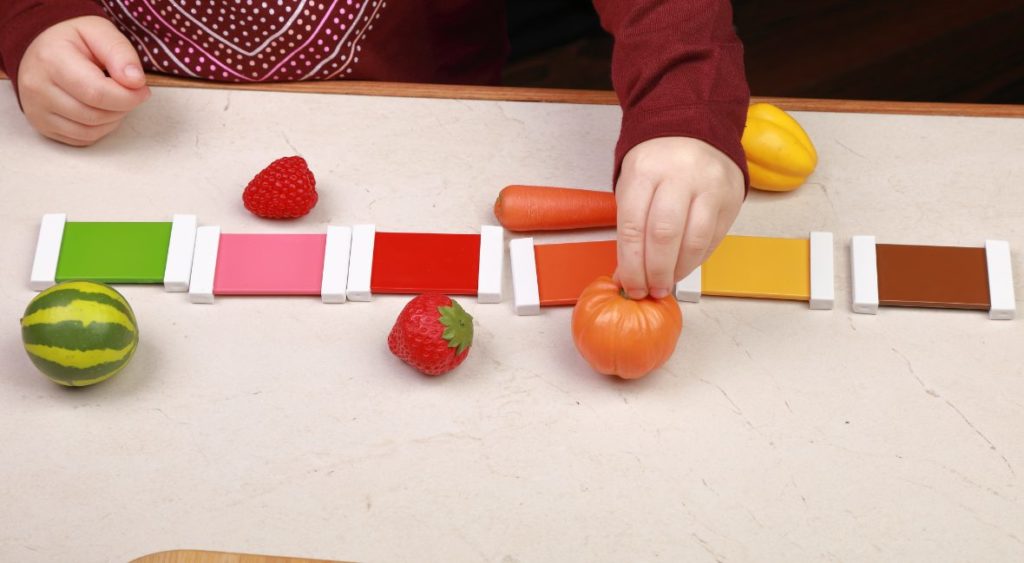
Reggio Emilia Approach
Strengths:
- Emphasis on Collaboration: The Reggio Emilia approach to learning is highly collaborative, involving group projects and community involvement, which can enhance social skills.
- Creativity and Expression: This approach strongly emphasizes artistic expression and encourages children to explore their ideas through various media.
- Adaptive Curriculum: The curriculum is emergent, based on the children’s interests, making it highly personalized and immediately engaging.
Best for:
- Children who are expressive and creative, thriving in less structured, project-based learning environments.
- Families who value social learning and community involvement.
- Learners who benefit from interactive and sensory-rich educational settings.
Considerations for Choosing
- Child’s Personality: Consider whether your child prefers structured tasks or more open-ended projects. Some children might thrive when they can explore freely, while others do better in a more organized setting.
- Educational Goals: Reflect on what you value most in education—academic skills, social development, independence, creativity, etc. Your priorities will influence which approach suits your family best.
- Adaptability: Both methods are flexible to some degree, but the inherent structure of each caters to different types of adaptability in curriculum and teaching style.
Ultimately, neither approach is inherently “better”; they simply differ in their methods and emphasis. If possible, it’s recommended that you visit schools, speak to educators, and observe classes to see which environment feels right for your child and best aligns with your family’s educational philosophy.
Final Thoughts on Reggio Emilia vs Montessori Education
Choosing between Reggio Emilia and Montessori depends largely on the child’s needs, the values of the family, and the desired outcomes from the educational experience.
Both systems offer unique strengths that provide rich, engaging, and effective early childhood education. By understanding the core principles and methods, parents and educators can make a choice that aligns best with their educational goals, ensuring that children learn and thrive in their early educational journeys.

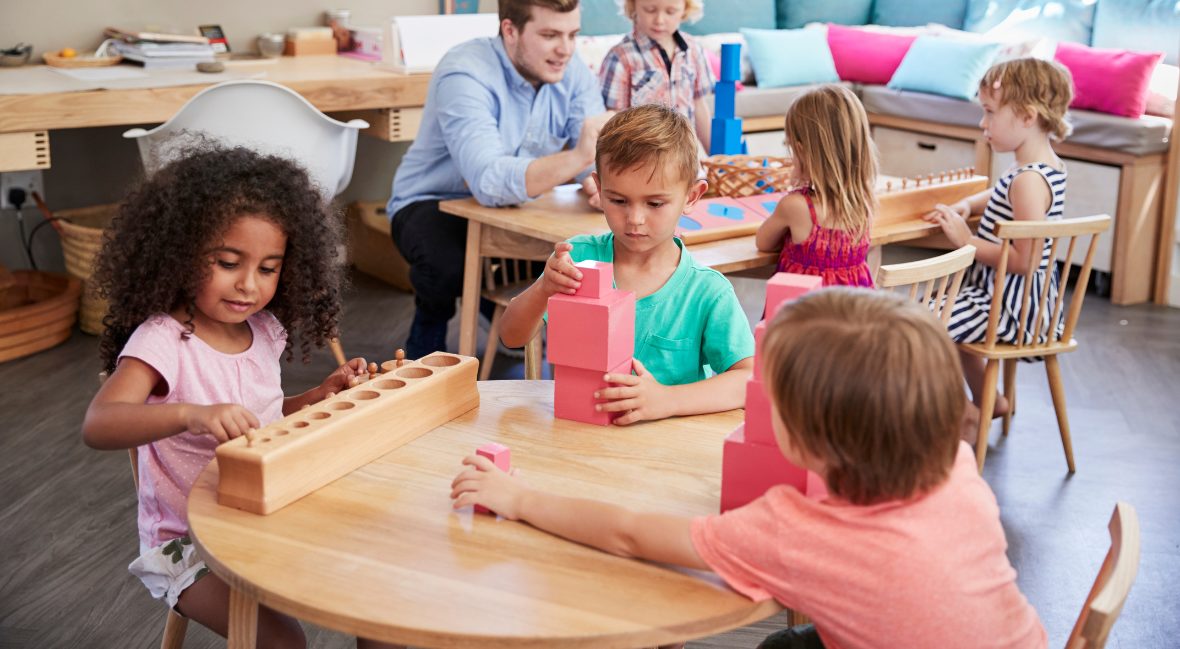
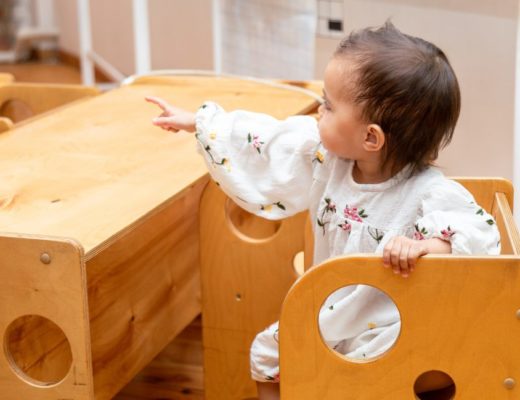
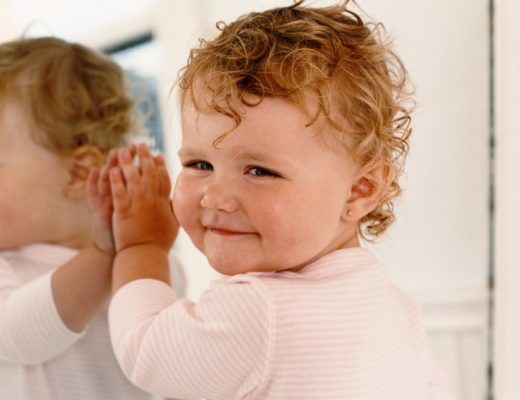


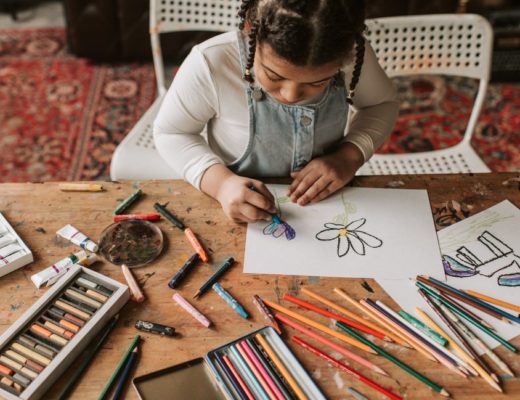
No Comments